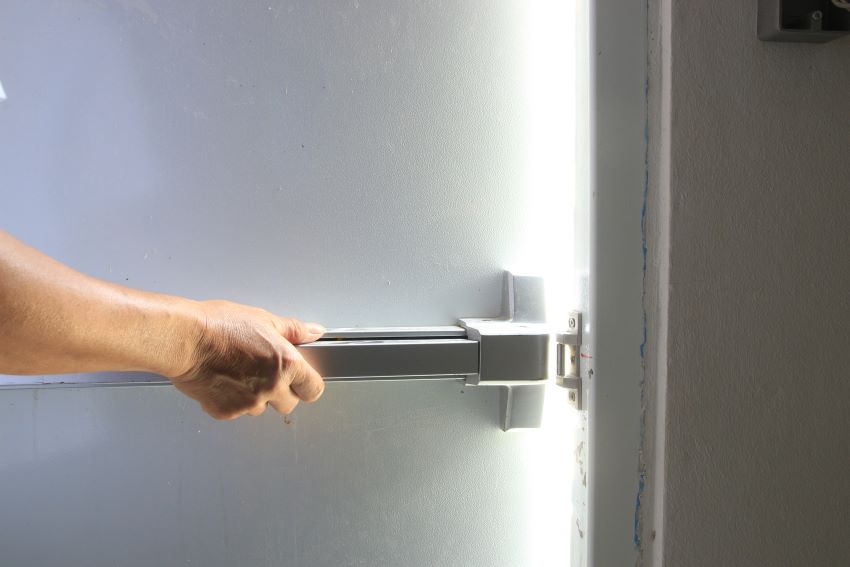
Access control systems are unique security systems that allow only authorized individuals to enter buildings or sections of buildings. In the past, businesses used keys and locks. Now we have migrated to these new devices that can range from simple electronic keypads for single doors to massive systems that support multiple buildings. Asides from improving the security of facilities, access control systems can also improve management. With access control devices, you do not have to collect old keys from past employees, replace locks, or wonder who has keys to the rooms in your building.
When choosing an access control system for your business, it's essential to choose the right one for your business's needs. To help with that, we have written this article to show you some of the types of access control devices available. This article will discuss the egress devices and the entry devices used in door access control systems.
What are the Different Types of Entry Devices?
Entry devices are the term used to refer to objects that release the secure lock. That is, they act as keys that open the door control system. Entry devices are usually found on the mullion of the exterior side of the door or the wall near the door. A mullion is the part of a door frame that separates the door from a glass window or panel. It is also the part of the frame between two doors. When the device is mounted on the mullion of the door, it is said to be a mullion mount. When the device is mounted on the wall near the door, it is called a gang mount. The following are some examples of entry devices:
Proximity Readers
Proximity readers are the most commonly used entry devices in businesses. With a proximity reader, one can easily deactivate a lost card and issue new ones without stress. They come with sensors that can read cards from up to three feet away. Since there is no contact between the card and the reader, wear and tear are minimal. In addition, it helps to save costs as many businesses today combine it with their staff ID cards.
Biometric Readers
Biometric access control systems allow users access based on their unique biological identification features like handprints, retinal scans, and fingerprints. These types of systems are the most secure for access control. They also usually cost more than a keypad or proximity reader.
Key Pads
These are commonly used in many businesses for protecting single doors. They are very affordable and easy to use. However, they do not offer as much security. Anyone with the code can easily share with others, and people also can try to crack the code. The system also lacks extensive audit trails if everyone uses the same code. This issue can be fixed by issuing unique codes to all of your employees.
Stand-Alone Locks
These battery-powered locks are usually used for single doors. They can be accessed with keypads, proximity readers, or a combination of the two. The beauty of the system is that you can install them easily. However, they usually cannot be integrated into a more extensive security network. Some of them, however, have small readers that can show you audit trails.
What are the Different Types of Egress Devices?
Egress devices refer to the security devices that secure the exit of access control systems. Unlike the entry devices, they are usually found near the exits of the building, either on the door or on a wall by the door. The purpose of an egress device is to ensure there is a free and secure passage out of a building. The following are some common types:
Push Buttons
These are button mounted near the exit point, and they usually carry directions. Pressing such buttons will automatically open the door.
Push Bars
These are usually attached to the inside of doors just at the position of the door latch. To exit the door, you need to push the bar. As you push, the latch will be released, and the door will open.
Emergency Exits
Emergency exit egress devices can either be break glass models or pull-down handle models. They are usually mounted on doors or walls at exit points. To leave the building, users have to either break a glass or pull a handle to release the door.
Motion Sensors
This type of egress device automatically opens doors when they detect humans or cars approaching the exit of buildings.
Delayed Egress
These are devices that come with timers that delay the opening of doors for security reasons. These devices usually have count-down times that count down to when the latch will be released, and the door will open. They also can come with sounds and voice commands that explain when the door will be opened.
Contact Koorsen Today for Your Access Control System Needs
Whether you want to outfit your business with a modern access control system or update your existing system, the Security Pros at Koorsen Fire & Security can help you. Our experts will work with you to determine the right system for your unique business's needs.


